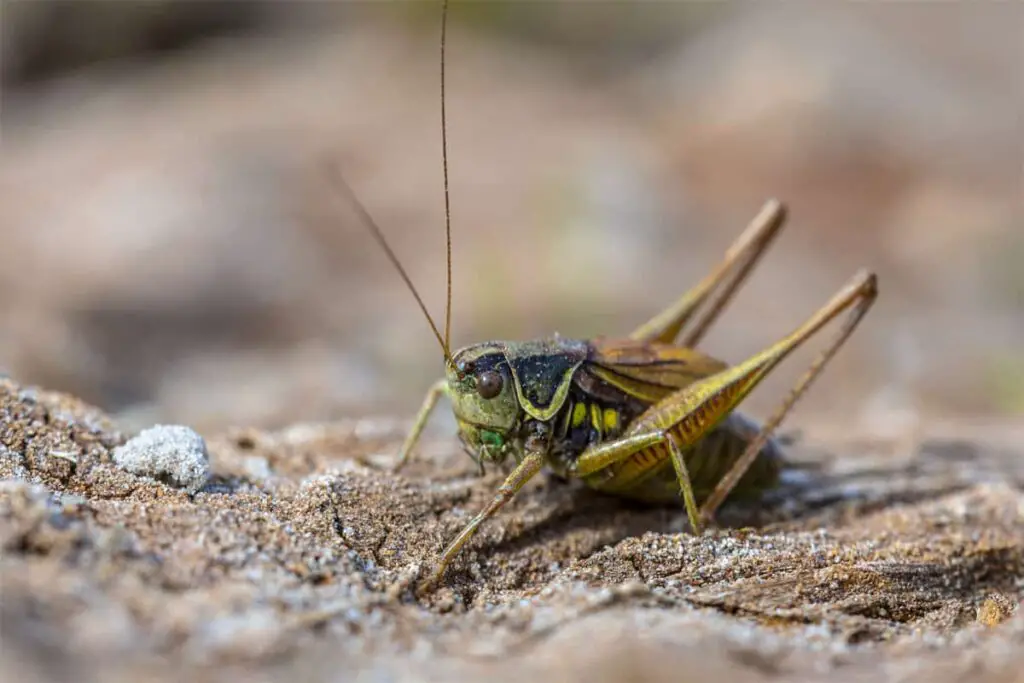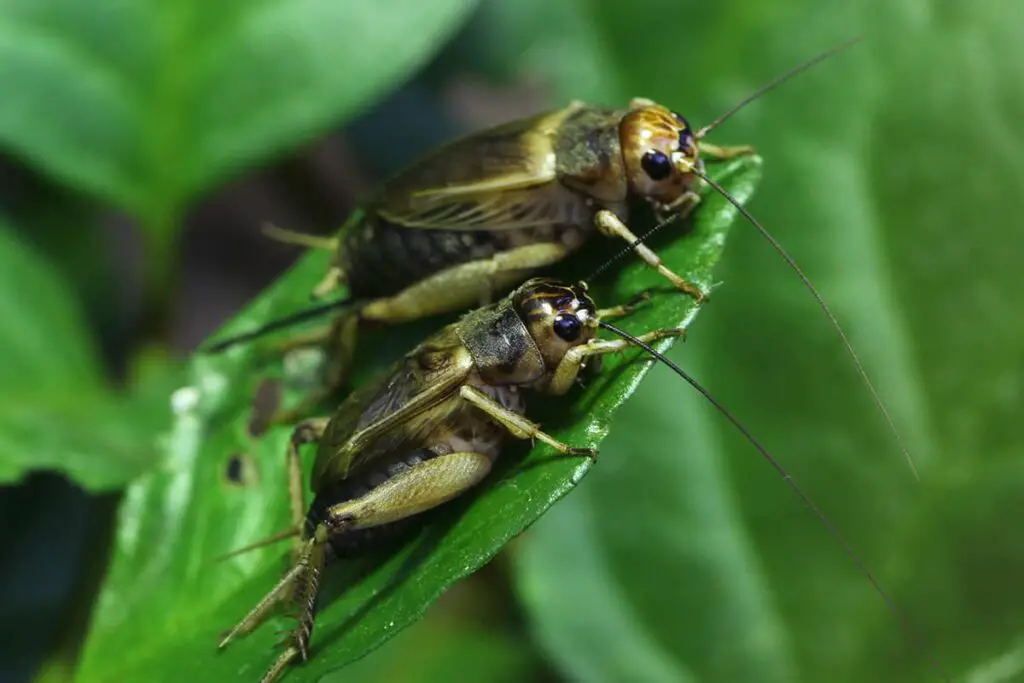Determining the gender of a cricket is surprisingly straightforward once you know what to look for. You might have heard the distinctive chirping of crickets on a warm evening and wondered which of the cricket community is serenading you. Those musical calls you appreciate so much are actually a male cricket’s way of attracting a mate. They produce this sound through a process called stridulation, where they rub their wings together to create that familiar chirp.
When observing crickets, one of the simplest methods to differentiate between males and females is by examining their anatomy. Males feature a pair of cerci, which are appendages at the end of their abdomen, and these are usually utilized during sound production. Females, on the other hand, can be identified by a prominent ovipositor that looks like a long needle extending from their rear end, essential for laying eggs.
Should you want to delve a bit deeper beyond listening for chirps, take a closer look next time you spot a cricket. The physical differences are clear once you know where to look, and these features are crucial for their survival and reproduction. Understanding these subtle nuances will give you an even greater appreciation for these ubiquitous insects.
Basic Differences Between Male and Female Crickets
When you’re trying to distinguish between male and female crickets, there are a few simple characteristics to look for.
Physical Attributes:
- Antennae: Males often have longer and thinner antennae compared to females. Females’ antennae are usually shorter and may appear bulkier.
- Abdominal appendages: You’ll find that males have two appendages at the end of their abdomen, while females have three.
- Hind legs: The male’s hind legs are typically thicker and longer; this helps in jumping and chirping. The hind legs of females are generally shorter and thinner.
Behavioral Traits:
- Chirping: Only male crickets chirp, a behavior they use for attracting mates and territorial claims.
Furthermore, female crickets have an ovipositor, an organ used for laying eggs. This looks like a long spike at the end of the abdomen, making it one of the easier distinctions.
Here’s a quick breakdown for easy reference:
| Feature | Male | Female |
|---|---|---|
| Antennae | Longer and thinner | Shorter and broader |
| Abdominal appendages | Two | Three |
| Hind legs | Thicker and longer | Shorter and thinner |
| Chirping | Yes | No |
| Ovipositor | Absent | Present (looks like a long spike) |
By observing these features, you can confidently differentiate a male cricket from a female cricket. It might take a bit of practice, but once you know what to look for, it becomes quite a simple process!
Physical Characteristics
Identifying male and female crickets is straightforward once you know what physical characteristics to look for. You’ll be analyzing features like size, body shape, and distinct markings.
Size and Body Shape
Male crickets are often recognized by their large hind legs, which facilitate their signature chirping. Their bodies are generally slender compared to females. Male crickets also showcase long and slender antennae for communication and sensing their environment.
In contrast, female crickets have a noticeable ovipositor—a tube-like structure used for laying eggs, which extends from their abdomen. This feature can sometimes be as long, if not longer, than the rest of their body. Females generally possess a bulkier body shape, and their antennae are shorter and less thin than those of their male counterparts.
Coloration and Markings
Both male and female crickets are typically found with variations of brown or black coloration. However, distinguishing them based on color alone can be challenging as there is considerable overlap in their color patterns.
What’s distinctive are the cerci, or the small appendages on the rear of both sexes. Males have cerci with numerous tiny sensory hairs, while females have smoother cerci without these characteristics. This difference is not immediately noticeable through coloration, but the cerci serve functional differences that reflect their physical form.
Behavioral Traits
In distinguishing between male and female crickets, observing their behavior can be quite revealing. Here’s what you should look out for:
Chirping Sounds
When you hear a cricket’s chirp, you’re most likely listening to a male. Male crickets chirp by rubbing their wings together, a behavior known as stridulation. They do this to attract females and to declare their territory. Each species has its unique chirping pattern, so the sound can vary from one type of cricket to another.
Mating Rituals
During mating rituals, male crickets are typically the active suitors. They start by making a calling song to attract a female. Once a female approaches, the male will switch to a quieter courting song. After mating, it’s common for the male to guard the female to prevent other males from mating with her. Female crickets are usually silent during this time and may signal receptivity by allowing the male to mount.
Examining External Anatomy
When distinguishing between male and female crickets, paying close attention to their external anatomy is crucial, particularly their antennae, wings, and abdominal features.
Antennae and Wings
Antennae: You’ll notice that both male and female crickets have a pair of long, slender antennae; the size and shape of the antennae do not typically differ between the sexes and hence aren’t reliable indicators for sex identification.
Wings: However, the wings offer a clearer difference. Male crickets possess clearly visible, firm and vein-like structures on their forewings, known as tegmina. These are used to produce the characteristic chirping by rubbing them together, an activity primarily observed in males. Female crickets do not chirp and thus lack the pronounced tegmina necessary for sound production.
Abdominal Features
Direct your attention to the cricket’s abdomen to find the most telling differences:
- Ovipositor: Only female crickets have an ovipositor, a tube-like structure used for laying eggs. It is clearly visible as an extension at the rear end of the abdomen.
- Terminal appendages: Males, on the other hand, have a pair of cerci (appendages) at the end of their abdomen. While females also have cerci, the male’s cerci are often more robust and may have additional structures associated with reproductive organs.
Learn how the chirping of male crickets attracts females.
Frequently Asked Questions
In this section, you’ll find clear answers to commonly asked questions that will help you distinguish male crickets from females based on various physical characteristics and behaviors.
How can you distinguish male crickets from females by their appearance?
You can tell male and female crickets apart by examining their abdomen. Males have two cerci, while females feature an additional long tube-like structure called an ovipositor, used for laying eggs.
What are the visual differences between male and female crickets?
Female crickets generally have a more robust build with a visibly stout ovipositor protruding from their abdomen. In contrast, male crickets exhibit a pair of cerci and lack an ovipositor.
Is size a reliable factor in identifying the gender of crickets?
Size is not always a reliable indicator of a cricket’s gender as it can vary greatly within species. It’s better to focus on the ovipositor presence and body structure to identify gender.
Do both male and female crickets make a chirping sound?
Only male crickets chirp, using this sound primarily to attract females for mating. They produce chirping by rubbing their forewings together, a behavior known as stridulation.
What is the purpose of an ovipositor in female crickets?
The ovipositor is an egg-laying device that enables female crickets to deposit eggs into soil or other substrates, ensuring their offspring have a secure and favorable start.
Can the color of a cricket help determine if it’s male or female?
Color is not a reliable characteristic for gender identification in crickets, as both males and females can have similar coloration patterns within a species.
Driven by a passion for those tiny creatures that rule our world, we at Bug Domain strive to be your go-to resource for information on insects.



